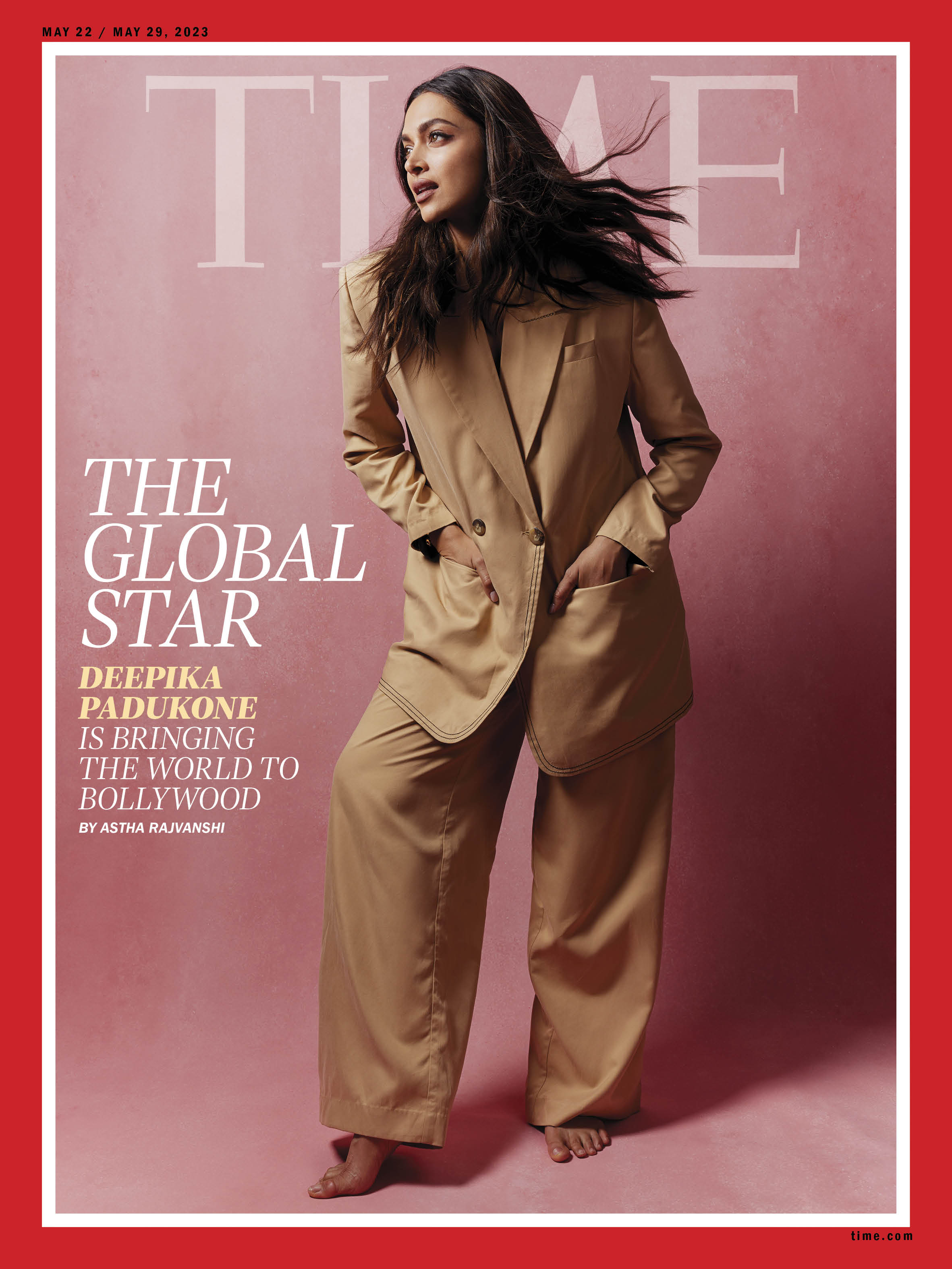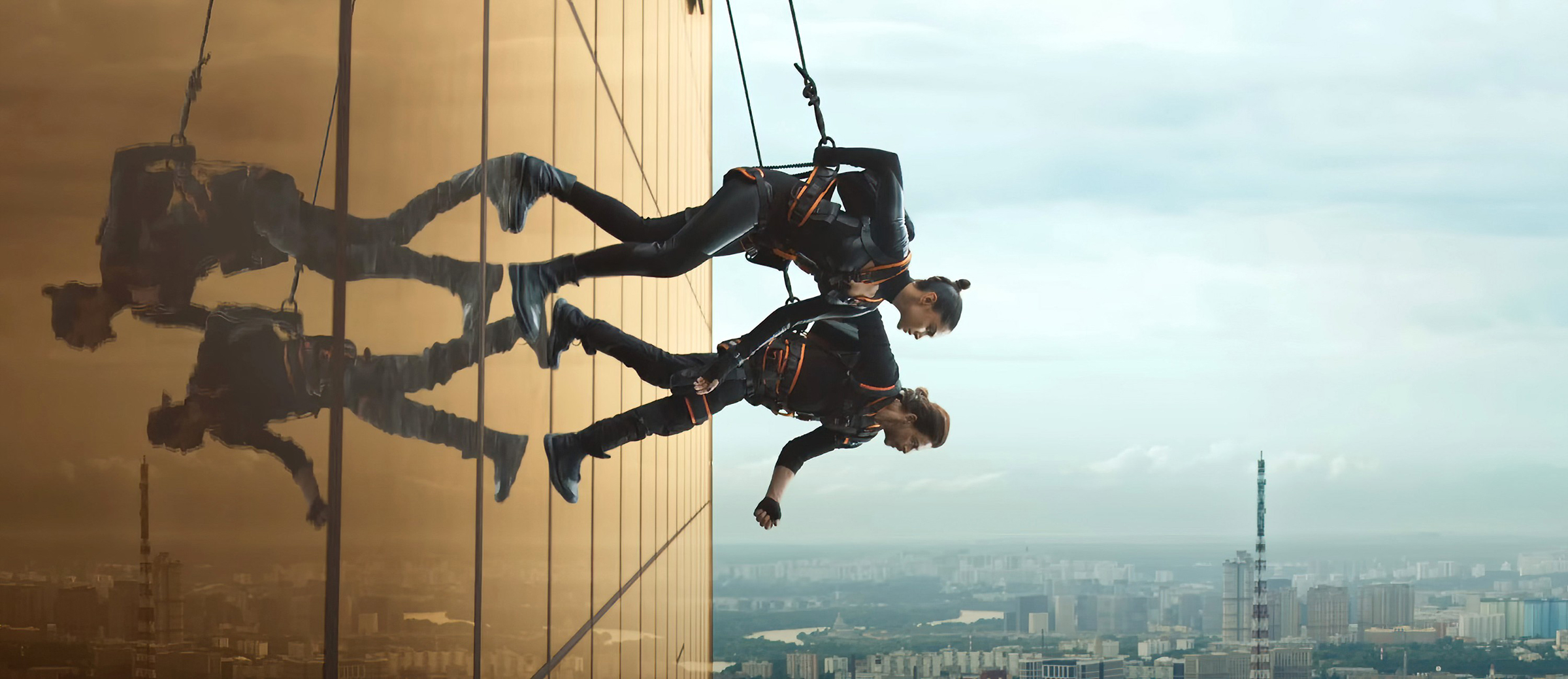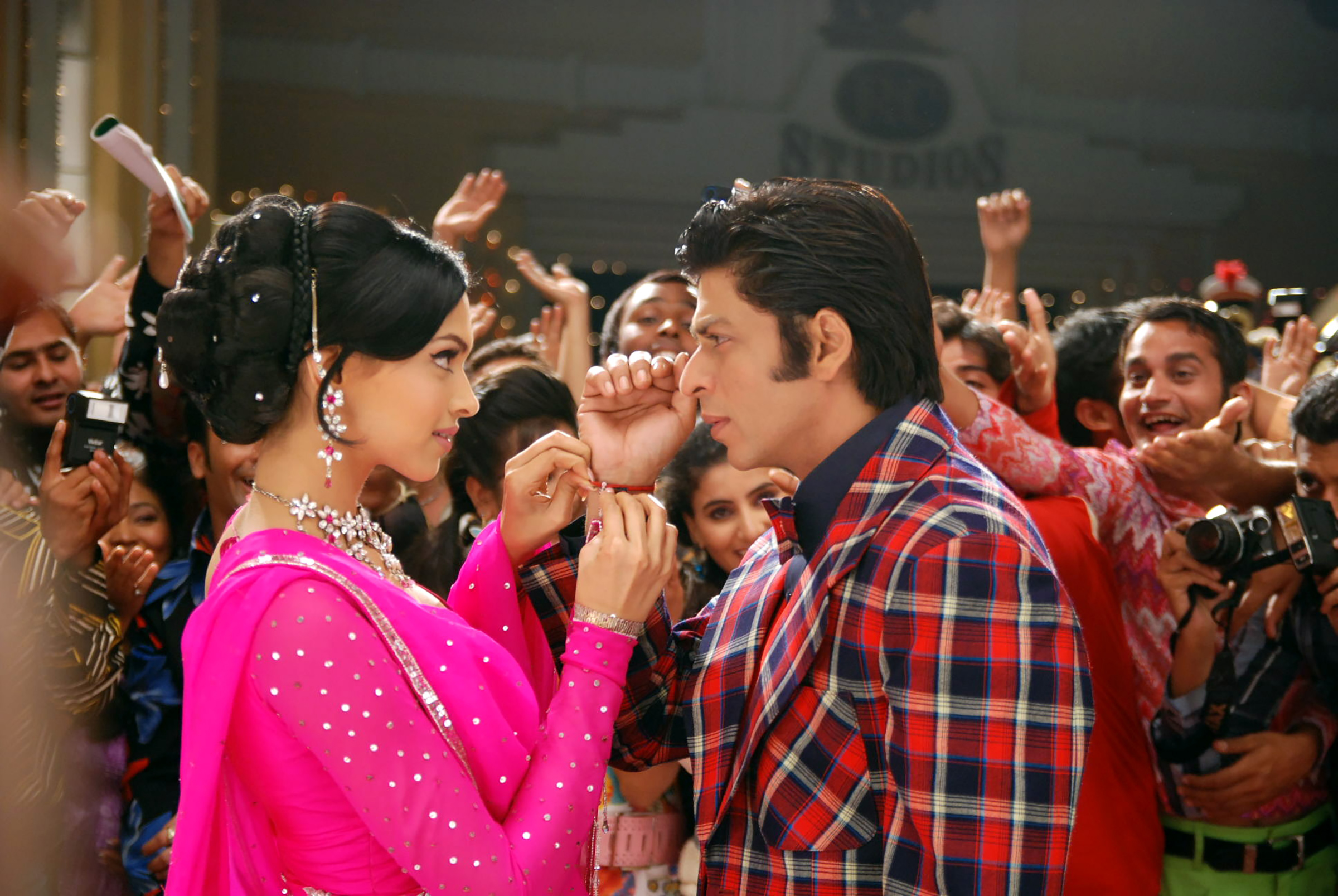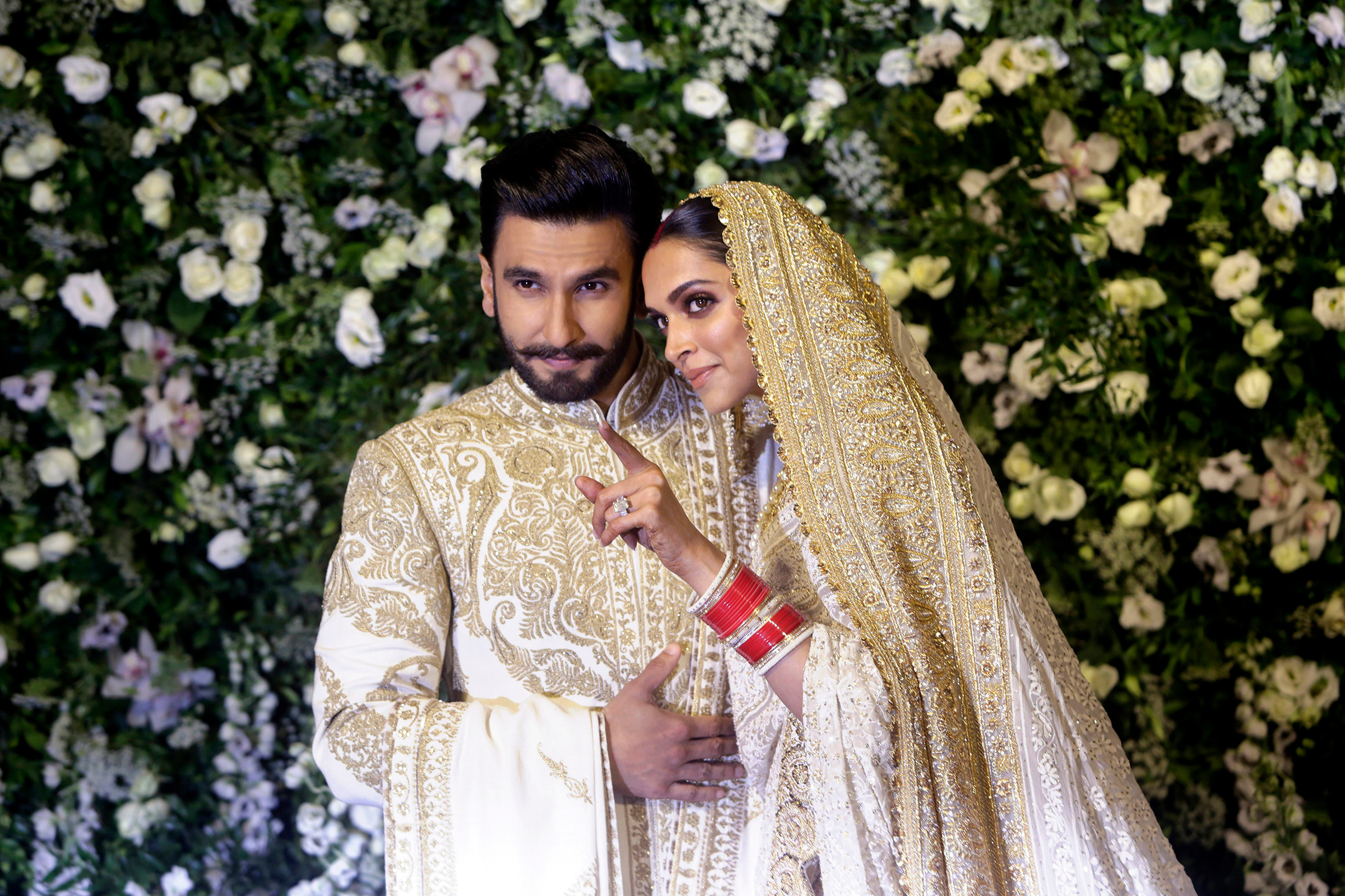Epik Padukone never intended to make India a global force. She desired for everyone to see India. Being the most well-liked actress in the most populated nation on earth, people frequently inquire about her plans to relocate to Hollywood. One steamy April morning in Mumbai, she tells reporters, “My mission has always been to make a global impact while still being rooted in my country,” taking a break from filming Fighter, India’s first aerial-action movie.
https://time.com/6278237/deepika-padukone-bollywood-india-profile/
It is appropriate that Padukone’s picture session for this article takes place within Mehboob Studios, the site of some of the most illustrious Hindi-language films ever produced, including Padukone’s 2013 film Chennai Express and the groundbreaking 1957 film Mother India, which was nominated for an Oscar.
Today, the 37-year-old is a self-made legend. She has made appearances in over 30 motion pictures, taken home many accolades, and brought in almost to $350 million at the box office worldwide. She is currently India’s highest-paid actress. Padukone is affectionately referred to as the Queen of Bollywood by her hordes of admirers and her approximately 74 million Instagram followers.
With a 16-year career, Padukone has defied the norm in Bollywood, the ruthless Hindi-language film business that values young and is always seeking for the next big thing. She believes that this is related to India’s increasing global influence. According to her, “Indians are everywhere and Indian cinema has crossed boundaries, so the fame goes wherever you go.”
 Nishanth Radhakrishnan took this picture for TIME.
Nishanth Radhakrishnan took this picture for TIME.
Get the Deepika Padukone cover print here.
With the assistance of social media, smartphones, and streaming services, India’s century-old film industry—which produces over 1,500 tales annually—has been able to reach new audiences. In parallel, Netflix and Amazon are keen to produce content for their sizable South Asian audience, which numbers close to 2 billion globally.
However, they aren’t only focusing on Bollywood. The recent success of Telugu-language movies like RRR and Bahubali has made some wonder if Bollywood can continue to rule the Indian film industry, which is made up of numerous regional languages. Meanwhile, behind the surface, tensions are growing as the Indian government, which leans to the right, keeps an eye on the narratives that India presents about itself on film.
Despite being at the intersection of all these influences, Padukone seems unaffected. After all, she was raised during India’s economic liberalization in the adventurous city of Bangalore, renamed Bengaluru today and dubbed the Silicon Valley of India. Padukone’s agent, Vijay Subramaniam, claims that Padukone embodies the “typical Bangalore girl”—someone who has everything at their disposal. Padukone is a silent trailblazer who sets her own boundaries and embodies the idealized feminine figure that Bollywood aspires to romanticize. She is the embodiment of contemporary Indian women’s aspirations and dreams—a person with complete autonomy over her life, career, and leisure.

In 2023, Padukone will co-star with Shah Rukh Khan in the film Pathaan. (The Everett Collection/Yash Raj Films)
Padukone and Shah Rukh Khan in Pathaan (2023). Everett Collection/Yash Raj Films
She delighted the crowds at the 95th Academy Awards earlier this year by introducing “Naatu Naatu,” the Oscar-winning Original Song from the film RRR, as a “total banger.” She also joined the 75th Cannes Film Festival’s exclusive jury and was the first Indian brand ambassador for Cartier and Louis Vuitton. She frequently creates a stir in the fashion world when she walks the red carpet at major international events like the Met Gala.
When Padukone shows up early for the shoot, the production team goes crazy. Four bodyguards, two agents, two personal photographers, a stylist, hair and makeup artists, and a few more helpers have all gathered around her. With her carefully chosen playlist playing in the background, she strikes a casual stance for the camera. Later, her husband, the legendary Bollywood actor Ranveer Singh, surprises her by dropping into the studio. She’s working and he’s disturbing her, but she laughs and they briefly clasp hands.
After the filming, we proceed to the Taj Lands End hotel, passing via a special door that is cordoned off for Padukone. The apologied hotel personnel tell her that our private room overlooks a building site and not the Arabian Sea, which is her desired view while we converse. She smiles and assures them she’s OK with it, then quickly requests that her group depart.
Her life is a lot right now. Seated cross-legged on a couch, she muses on her accomplishment. She claims, “I didn’t see failure on my vision board, but I didn’t have a game plan for how to get here.”
She is searching for her next move even though she feels content. She declares, “India’s moment is now.” What better way to unite the East and the West than via marriage?”
 Padukone and Shah Rukh Khan in Om Shanti Om in 2007. (Everst Collection/Eros Entertainment)
Padukone and Shah Rukh Khan in Om Shanti Om in 2007. (Everst Collection/Eros Entertainment)
In a melancholic love scene, Padukone, 21, slow-motion strolls down a red carpet. She has a sleek bombshell hairstyle, a magenta lehenga-choli, and perfectly applied full-winged eyeliner that matches her killer dimples. One of the biggest actors in the world, Shah Rukh Khan, is paired with Padukone in her debut Hindi film, Om Shanti Om, a campy, outrageous parody of ’70s Bollywood. She is able to hold her own anyway.
The movie’s co-producer, Khan, acknowledges that he wasn’t convinced Padukone could carry the part when he first saw her. Nonetheless, she seemed to be about to break out into stardom. “It was known by all,” he claims. Om Shanti Om shattered box office records and went on to co-star in four more movies. They starred in the spy thriller Pathaan in January, which went on to become one of the highest-grossing Hindi movies ever, taking home a whopping $100 million worldwide. Jawan, a different collaboration, will be released later this year. Working with Padukone is like to “working with family” for Khan.
Although Padukone was thrust into the spotlight following Om Shanti Om, her journey was not without its challenges. In Bollywood, where long-simmering frustrations about nepotism suddenly erupted during the epidemic, she was an outsider who fueled a confrontation with the privileges accorded to offspring of actors, producers, and directors who effortlessly succeed in the business.
Padukone, on the other hand, never imagined she would work as an actress. She was born in Denmark to Ujjala Padukone, a travel agent, and Prakash Padukone, a world badminton champion who is mostly recognized for having introduced the sport of badminton to the people of India. Before leaving her family at the age of 16 to pursue a career in modeling on the Mumbai runways, she competed nationally in badminton. “As far as my story goes, nothing suggests that I would be involved in the films,” she declares. The strange thing is that I connected with my family when we sometimes watched movies together. Like, I’m going to be there someday.”
Padukone, on the right, with his mother Ujjala, younger sister Anisha, and father Prakash. With thanks, Padukone
Padukone with several medals and trophies from the school’s sports day in Bangalore, covering a range of sports. With thanks, Padukone
Her first movie provided stability and safety because of its star power, but the years that followed were filled with errors. Her subsequent films did not perform well at the box office, and reviewers thought her performance was at most passable, therefore her selections were called into question. While Padukone acknowledges the criticism right on, she also notes that “this girl was kind of this next big thing, but she was just finding her way out in those years.”
Renowned Hindi cinema critic Anupama Chopra claims that after witnessing movies like Cocktail (2012), Chennai Express (2013), and Goliyon Ki Raasleela Ram Leela (2013), she started to see a change in Padukone’s performance. Piku (2015), an unusual comedy with a lot of potty humor, may be her most memorable picture and the culmination of it all. You somewhat stood back and asked yourself, “Oh my gosh, when did this happen?”states Chopra. “She demonstrated to the world that what mattered most was what you did in front of the camera, regardless of how attractive you were or how many brands you represented.”
She made her Hollywood debut in 2017 when she costarred with Vin Diesel in xXx: Return of Xander Cage, an opportunity that gave her the freedom to try new things. “Acting in English for the first time was so weird, even though we speak it all the time,” she muses.
But with the conservative Hindu-nationalist trend in Indian politics over the past ten years, she has also seen strong opposition to her stardom. Her role in the maximalist historical drama Padmaavat, which tells the story of a Hindu queen who wins the Muslim Sultan of Delhi over, was the catalyst for its first surge in popularity in 2016. Hindu vigilantes burned the movie on fire due to rumors that the two characters were having a love scene, and viewers were horrified when a BJP member offered a $1.5 million reward for Padukone’s head. The official was arrested by local police.
 2017 saw Padukone in Padmavaat. Classic Hollywood Films/Everett Collection
2017 saw Padukone in Padmavaat. Classic Hollywood Films/Everett Collection
In 2020, Padukone was spotted standing silently at a student protest against an anti-Muslim citizenship law at New Delhi’s Jawaharlal Nehru University. Bollywood stars don’t traditionally speak up or protest, so what Padukone did was a rare—and risky—example of a public figure calling out the Indian government, led by Prime Minister Narendra Modi.
And in January came the “saffron” bikini attack over Pathaan—when a Hindu-nationalist minister objected to Padukone’s wearing an orange-colored bikini in a musical sequence. (Orange is considered a sacred color in Hinduism and has been adopted as a symbol for Hindu nationalists.) But Padukone is relieved to say she was genuinely missing in action when the controversy exploded days before the film’s release—she was simply busy at work.
Padukone has remained studiously silent about these controversies, which haven’t deterred her from taking up any roles—including the role of a Pakistani spy in Pathaan. A long pause follows when she is asked about the constant political backlash. Padukone then says, carefully, “I don’t know if I’m supposed to feel something about it. But the truth is, I don’t feel anything about it.”
India may be living in a “polarized cultural climate,” says Chopra, but Bollywood’s real crisis is one of storytelling and content. “Bollywood has lost its place,” says the critic. “It’s a crisis of making better Hindi cinema that connects with the rest of the country,” she continues, nodding to the perception that South Indian movies have, of late, better captured the zeitgeist than those being made in Mumbai.
Last year, Padukone served on the eight-member jury of the 75th Cannes Film Festival, tasked with announcing the winner of the coveted Palme d’Or award. Part of her job entailed “educating everyone around me that Indian movies are more than just song and dance,” she says.
But the opportunity equally made Padukone reflect on Bollywood’s place in the world. She spent the two weeks in Cannes wondering why more Indian films weren’t being showcased on a global stage. “I would say that Hindi cinema has evolved, but we still have a long way to go,” she says. “Why haven’t we had a better moment?”
Until last year, no Indian film had won an Oscar, despite the Indian film industry’s entertaining billions of people. Only three Indian films have been nominated for Best International Feature Film. Now, with the recognition of more diverse content, Padukone says India itself is beginning to realize that its movies are not just limited to Hindi films.
“But I don’t think we should be happy with one Oscar for a song and one Oscar for a documentary,” she says. “I hope we can look at this as the beginning of an opportunity.”
 Padukone alongside jury members at the Cannes Film Festival closing ceremony on May 28, 2022. Patrícia de Melo Moreira—AFP/Getty Images
Padukone alongside jury members at the Cannes Film Festival closing ceremony on May 28, 2022. Patrícia de Melo Moreira—AFP/Getty Images
With global superstardom at her doorstep, Padukone is aware of the importance of not losing sight of herself along the way. She is eager to be as authentic as possible—which has also meant being honest with herself, and the world, about her personal challenges.
In 2015, she became one of the few Bollywood actors to come out publicly about her struggle with depression. It surprised everyone around her, especially since she was at the peak of her career, having delivered three hits in a single year. In a country where the stigma around mental health hangs heavy and resources for treatment remain scarce, the admission had every potential to end her career. “But when I spoke about it, it just felt extremely liberating,” she says.
Padukone founded the Live Love Laugh foundation, now headed by her sister, which works with local communities to create awareness and access to mental-health resources. This year, she also launched her own cosmetics brand, 82°E, with the goal to talk about self-care more broadly.
Her actions have opened up conversations about mental health across India, where an estimated 56 million people suffer from depression. “A lot of other celebrities have spoken about [mental health] since then, but more importantly, a lot of noncelebrities have also spoken about it,” says Anisha, her sister. “This is an illness that doesn’t discriminate.”
Padukone is grateful for the support she has received over the years while laying bare her anxieties—especially from her fans. “The beautiful part is that millions of them will probably never meet me, but they’re still on the journey of life with me,” she says. “They understand my body language, my expressions, my silences.”
At the same time, her drive for authenticity has made her conscious of not changing in the eyes of those closest to her. “I will also give myself a little bit of credit that for whatever reason, I’ve been able to keep myself grounded,” she says.
And then there’s her husband Singh, who ripples through Bollywood wearing quirky outfits in public, playing pranks on his co-stars, occasionally posing nude for a shoot—and always making Padukone laugh. The two have just returned from a holiday in Bhutan, where they spent their days doing what Padukone enjoys most: going on walks, sightseeing, and eating. With him, she is her “most vulnerable self,” she says.
Not long ago, Bollywood actresses came with a shelf life that expired as soon as they got married or had children. But that’s changed, Padukone insists. “I’ve never had that experience because [Singh] has always put me, my dreams, and my ambitions first.”
 Padukone and Singh during their wedding reception in Mumbai, India, on Nov. 28, 2018. Rajanish Kakade—AP
Padukone and Singh during their wedding reception in Mumbai, India, on Nov. 28, 2018. Rajanish Kakade—AP
Padukone married Singh in a private celebration in Lake Como, Italy, in 2018. The couple held two intricate Hindu ceremonies—a Konkani ceremony nodding to Padukone’s South Indian roots, and a Sikh ceremony that honored Singh’s North Indian traditions.
The wedding may have been small, but its glamour quotient was high. Padukone tapped India’s most famous designer, Sabyasachi Mukherjee, to dress the couple. Being a Sabyasachi bride was a savvy move for a fashion icon like Padukone—even today, the power couple’s nuptials remain one of the most double-tapped posts on Instagram, inspiring the wedding aesthetics of Indian couples who form a $50 billion-strong wedding market.
The payoff for dominating Instagram, as Padukone has time and again, is enormous, both for her and the companies that hire her. BoF reported the Bollywood star accounted for seven of Louis Vuitton’s top 10 Instagram posts, generating more than 25% of the brand’s $20.2 million in media impact value during the Cannes Film Festival, according to data analytics and marketing agency Launchmetrics. A single Instagram post of Padukone in a floor-sweeping red Louis Vuitton gown garnered more than 2 million likes and generated more than a million dollars in media impact value.
The endorsements go on and on—Levi’s, Adidas, L’Oreal, and Tissot—brands that see Padukone as their gateway to a growing Indian market that was previously thwarted by bureaucracy. In April, Dior hosted its first official show in the country, near the Taj Mahal Palace Hotel. But beyond weddings and luxury clothing brands, India—the world’s most populous nation with 1.4 billion people—will soon become the world’s third largest apparel and footwear market, predicted to be worth more than $83 billion by 2025, according to data from Euromonitor.
If brands want to capitalize on a “new India,” which Padukone calls simply “an emotion,” she knows that stardom has placed her at its fulcrum. “There’s the India with our roots, our heritage, our history, but there’s also a new and young India that’s emerging.”
It’s almost time to go. In a few minutes, she will slip out the special exit with her bodyguards. “It’s these two Indias coming together,” she says, “that I find really fascinating at this moment.”
Correction, May 11
The original version of this article misstated Vijay Subramaniam’s role. He is Padukone’s agent, not her manager.
Styling by Shaleena Nathani; Hair by Yianni Tsapatori; Makeup by Anil Chinnappa; Production by Keyur Lakhani at Imran Khatri Productions
News
Ngôi nhà bị xe Mercedes đâm trên phố Hàng Bạc: những điều ít ai biết
Sáng 4/12, một chiếc xe Mercedes đã bị mất lái khi đến trước cửa nhà số 47 Hàng Bạc, phường Hàng Bạc. Xe đã đâm vào mạn…
Vén màn bí ẩn tảng đá nghìn năm tuổi bị cắt đôi một cách hoàn hảo đến mức khó tin
Tại sa mạc Tayma, Ả Rập Xê út, khối đá Al Naslaa nghìn năm tuổi được chia đôi ở chính giữa bởi một nhát cắt hoàn hảo…
Bí ẩn về quan tài khổng lồ bằng đá nặng hàng trăm tấn ở đền Serapeum Saqqara, Ai Cập khiến các nhà khoa học đau đầu
Các nhà khoa học trên toàn cầu bối rối trước những quan tài đá granite vuông vức khổng lồ nặng hàng trăm tấn được tìm thấy tại…
Làm thế nào để được bồi thường bảo hiểm xe máy? người dân cần biết để tránh mất quyền lợi
Trong trường hợp xảy ra sự cố, người ta muốn mua bảo hiểm xe máy để có được bồi thường nhanh chóng. Bài viết này cung cấp…
Quảng Nam: Khỉ tấn công nhiều người và cắn ch:ế:t bốn con chó
Một con khỉ to lớn đã tấn công ba người dân ở Quảng Nam và cắn chết bốn con chó. Lãnh đạo UBND xã Quế Mỹ, huyện…
Hàng loạt các quan chức ở An Giang đã bị bắt vì tội tham ô tài sản.
Các cá nhân bị khởi tố bao gồm ông Ngô Hoàng Hiếu, nguyên Chủ tịch UBND huyện Chợ Mới và Vũ Minh Thao, Phó Chánh Thanh tra…
End of content
No more pages to load






